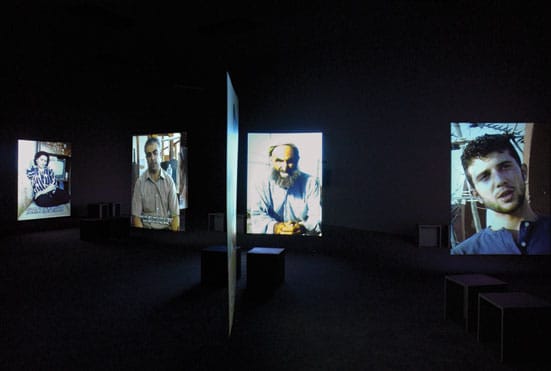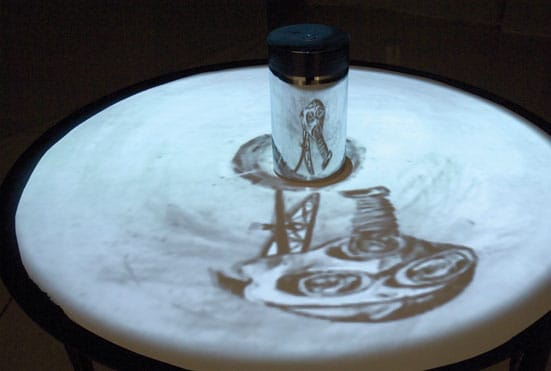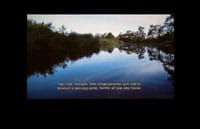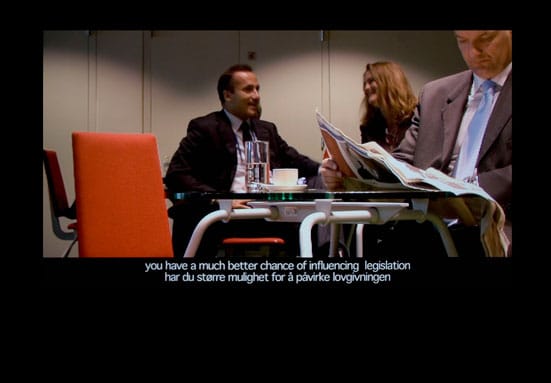As prominent researchers and practitioners gathered in Bergen for a conference on 'To biennial or not to biennial? That is the question', two such events were already underway in Norway and Sweden. In the small town of Moss, an hour south of Oslo, Momentum - the Nordic biennial of contemporary art was on display across two venues; three hours further down the Scandinavian coast, Gothenburg hosted their international art biennial across several art institutions. Both were being staged for the fifth time and both were imbued with a sense of buoyancy, bearing the titles Most Favoured Nations and What a Wonderful World respectively. Comparisons stop there; the exhibitions reflected completely diverging curatorial approaches. Whereas Momentum examined the Nordic context and displayed a number of works by emerging Scandinavian artists, Gothenburg looked outwards and was dominated by internationally renowned artists, whose works were gleaned, in large part, from past European biennials and exhibitions. The experience of the Gothenburg biennial was, therefore, one of a mounting sense of déjà vu. Jörgen Svensson's cinematic insertions into Rebel Without a Cause, for example, and his clowns in The World Next Door, shown at Manifesta 7, joined Amar Kanwar's Documenta 12 installation The Lightning Testimonies and William Kentridge's revolving tabletop animation What Will Come (has already come) at the City Museum. Only Fiona Tan's Tomorrow made any reference to the local context of the biennial, having been shot at a high school in Stockholm.
The sense of familiarity continued with the other works displayed across six venues in the city, subsumed under a rather hazy curatorial concept. The main hall of the Gothenburg Kunsthall was given over to Kutlug Ataman's installation Twelve (2003) where viewers zigzagged between screens showing interviews with people who believed they were the subjects of reincarnation, and where the sound showers created a steady hum across the darkened interior. Susan Hiller's The Last Silent Movie suffered no detriment upon third viewing, imbued with the nostalgia of lost languages, which echoed the sentiment of Ataman's installation. Other highlights included Röda Sten, where the multiple screens of Candice Breitz's Working Class Hero, arranged in a line bisecting the rough factory interior, boomed across the cavernous space, spilling into the stairwell. Pushwagner's Soft City, however, received a slicker presentation at the Berlin Biennial in 2008 than in Gothenburg's City Library. This was also the case with Tracey Moffatt's Doomed, which was shown on a lone small screen at the Museum of Art. A concomitant film programme at Bio Capitol, which included Harun Farocki and Artur Zmijewski, heightened the predominance of moving image work. The inclusion of only two young, Scandinavian artists underlined the 'import' nature of Gothenburg 2009 as the lovefilm.com of biennials.
Momentum gave a messy first impression. The entrance to Moss Kunsthall was filled with colourful bric-a-brac of Helgi Thorsson's installation, including a hippy van driven from Berlin to Moss and kindergarten style drawings. Just off this room, Fia Backström's darkened archive of digital information gathered over the last eight years appeared like a high-tech control room and re-established a sense of order. Her multi-screen installation examines the 'post capitalist information society' as text and imagery are juxtaposed against the backdrop of colourful switch lights. Saskia Holmkvist followed a similar line of inquiry in her examination communication strategies in Interview with Saskia Holmkvist (2007) and of the role of internships in cultural institutions – now rife as they are an easy way of obtaining cheap labour – in Internship in Private (2007).
Nordic mythology provided a frame reference for a number of works in Momentum. Young Norwegian artist, Marthe Thorshaug, continued her exploration into myths from works such as The Wolf Man (2003) in her The Legend of Ygg. In this film, a group of young female horse-riders use the tapetum – the reflective nature of the animals' eyes – to blind car drivers, in a modern version of the ancient Icelandic game of Chicken when riders met on narrow paths. The slightly stilted delivery of the dialogue and the fact that the ponies in question were more cute than sublime representations of equestrian power, gave the film a slight farcical undertone, which may not have been intentional. The allusions to nature and mythology were also evident in the work of Mats Adelman, whose dimly lit wooden bird sculptures created an ominous atmosphere. This effect was perpetuated by Roger Anderssons miniature wood sculptures set against the backdrop of a silent, black and white film of children digging in a graveyard. In fact, a large proportion of the works in Momentum were cast in shadow. In the darkness, sensory dislocation was enhanced by excessive sound spill from surrounding installations, which marred the impression of some of the works.
Upstairs in the Momentum Kunsthall held some of the most interesting work in the biennial. Two film projects, in particular, evoked the nature of political dimension of integration and societal change implicit in the Most Favoured Nations title. Petra Bauer and Annette Krauss' examined the Van Abbemuseum's two-year project Be(Com)ing Dutch, centring their attention on the issue of Zwarte Piet. This sooty-faced, curly-haired companion to St Nicholas has been present in Dutch pre-Christmas celebrations since the mid-nineteenth century, but recently sparked popular debate. In their investigation into the issue and its aftermath, Bauer and Krauss evoked the wider context of Dutch national identity, recent right-wing populism and racial sensitivity, which bore close resemblance to similar discussions in Norway, particularly in the run-up to the general election in September 2009. Libia Castro and Olafur Olafsson's video Lobbyists (2008) draws on the documentary television trope to examine the role of NGOs, watchdogs and policy-influencers in Brussels, but the matter-of-fact imagery is offset by the narration being performed via a reggae soundtrack. The disjuncture between the audio and the image creates an effective means of conveying a potentially dry message.
One of the most memorable works in Momentum was that of young Norwegian artist Jan Freuchen, who showed his remake of John Frankenheimer's sci-fi classic Seconds from 1966 with Norwegian art scensters miming the original dialogue. In the film, the main protagonist is given a new identity as an artist following extensive plastic surgery. Props surrounded the TV monitor (bandaged heads, paintings and sculptures the 'artist' made, cinema history paraphernalia) and referred back to the action on screen, creating a visual orbit that reflected the patient's conversations with his therapist and doctor. The work invokes, viscerally and cerebrally, issues around artistic authenticity, authorship and the nature of the creative process. The idiosyncrasies of the Norwegian context slipped seamlessly into a wider transnational discourse, which presumably is the aim of any attempt 'to biennial' in a Nordic context.
Natalie Hope O'Donnell

Kutlug Ataman
Twelve
2003

William Kentridge
What Will Come (has already come)
2006

Saskia Homkvist
Blind Understanding
Photo: Terje Holm

Libia Castro & Ólafur Ólafsson
Lobbysists 2009
Photo: Terje Holm